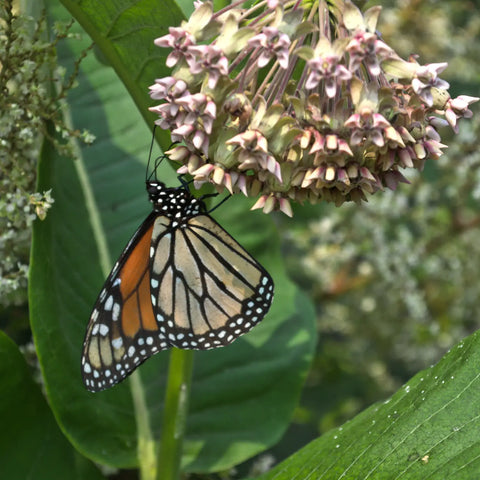When we think of iconic relationships in nature, the bond between milkweed and monarch butterflies may be the strongest of the sort. This unique, intimate, and exclusive relationship has fascinated scientists and nature enthusiasts alike. But what makes this partnership so special, and why do monarchs seem to be so monogamous with milkweed?
The Life Cycle of Monarch Butterflies
Monarch butterflies (Danaus plexippus) are renowned for their vibrant orange and black wings and their remarkable migration journey, which spans thousands of miles from North America to central Mexico. However, the survival of monarchs hinges on a critical factor: the presence of milkweed plants (genus Asclepias).
Why Milkweed?
It’s the Monarch's nursery: Milkweed is the sole host plant for monarch caterpillars. Female monarchs lay their eggs exclusively on milkweed leaves. This is because milkweed provides the perfect nursery, supplying all the necessary nutrients that the caterpillars need to grow and develop. The young caterpillars hatch and immediately begin feeding on the milkweed leaves, a vital first step in their development.
Built for defense - milkweed and its toxicity: Milkweed contains toxic compounds called cardenolides, or cardiac glycosides that deter animals and caterpillar predators. When monarch caterpillars consume milkweed, these toxins are ingested and stored in their bodies. This makes the caterpillars (and later the adult butterflies) distasteful and toxic to predators too, providing a crucial defense mechanism against birds and other threats.
How to Support Monarchs in Your Garden
Monarch populations have faced significant declines due to habitat loss, pesticide use, and climate change. The reduction in milkweed plants, particularly in agricultural areas and roadside habitats, has had a major impact on monarch numbers. Conservation efforts have increasingly focused on restoring milkweed habitats to support monarch populations.
So grow for monarchs! By increasing the availability of milkweed plants, we can help ensure monarchs have ample breeding sites and food sources for their caterpillars.
Choose Native Milkweed Species:

Different regions have different native milkweed species so it’s best to do a bit of research on your growing zone and conditions.
Common Milkweed (Asclepias syriaca): Adaptable to various environments, common milkweed can be found in a variety of habitats including fields, roadsides, and disturbed areas. It prefers well-drained soils but it is a resilient strain that spreads by seed and rhizomes, developing into a large colony of plants so give it room!
Swamp Milkweed (Asclepias incarnata): Thrives in wet conditions! This strain prefers moist, swampy areas such as marshes, stream banks, and wet meadows. It has clusters of pink and mauve blooms that give off a light vanilla scent.
Butterfly Weed (Asclepias tuberosa): Prefers dry, well-drained soil and full sun. Bright orange to yellow clusters of flowers that bloom in early to late summer. The flower clusters are more compact and vivid compared to other milkweeds. Butterfly weed can be found in dry, sandy, or rocky soils, often in prairies, open woods, and roadsides.
Avoid Pesticides
Pesticides can be harmful to both monarchs and milkweed. Opt for organic gardening practices and avoid using chemicals that could harm these delicate and beloved species.
Feed them with a variety of nectar plants:
Though milkweed is their primary love, our monarchs need to eat too. Plant a variety of nectar-rich flowers that bloom throughout the growing season to provide the adults with necessary food sources during their migration and breeding periods.
The nectar-providing plants butterflies love the most:
- Alyssum
- Gaillardia / Blanket Flower
- Coreopsis
- Echinacea / Coneflower
- Larkspur
- Lupine
- Marigolds
- Poppies
-
Zinnias
Click HERE or a full list of our pollinator loving flowers🌸
Follow our friends TheEverHopefulGardener and monarch.messengers for even more information on how to support the Monarch Butterflies in your yard!


I love to grow borage! It attracts a lot of bees. AND it reseeds! (but the groundhogs are champion’ it.) Also same with comfrey. tons of bees!